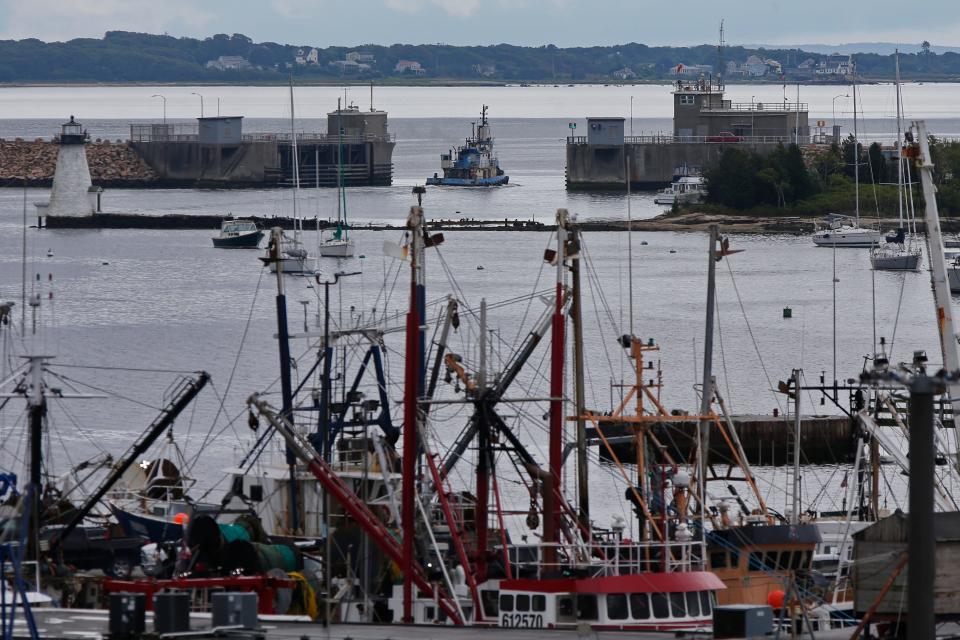Is the New Bedford Hurricane Barrier going to close for Hurricane Lee? Here's how it works
NEW BEDFORD — The U.S. Army Corps of Engineers is continuing to monitor storm forecasts but there are currently no projected closure times for the New Bedford Hurricane Barrier, according to a USACE spokesman Friday morning.
The USACE will be ready to close the barrier, if necessary, and extra barrier staff will be on site a minimum of three hours before any large, projected high-tide event to determine if closure is necessary.
Bryan Purtell, USACE media relations manager, said, "There are barrier staff on site as ships and boats are being moved into the safety of the harbor. But additional operators will arrive at least three hours prior to a known large projected high tide event to start providing real-time feedback on site."
Purtell said that regular high tide is projected to occur tonight at about 9:30 p.m. Staff will take into account the updated projected winds and rain forecasts and expected storm surge at that time to determine if it meets the barrier closure criteria.

"We don’t currently think it will. I would say it’s still to be determined, but I’m sure we will have extra staff on site this evening as a precaution and feeding back information."
The USACE will provide updates on its social media channels -- on X (twitter.com/corpsnewengland) or on Facebook (facebook.com/CorpsNewEngland).
Hurricane Lee: Canceled events, postponements in the New Bedford area
When was the New Bedford Hurricane Barrier built?
The New Bedford Hurricane Barrier was completed in 1966 after four years of construction involving almost one million man-hours of work.
Approximately 900,000 tons of granite went into the 18,000-foot-long insurance policy against tidal flooding associated with hurricanes and coastal storms.
The Standard-Times reported on its grand opening in May 1966: "It cost $1,000 a foot, is long enough to span the 3.5 mile width of New Bedford, is as high (and wider) than The Great Wall of China, and has enough steel in it to build a Navy destroyer. Its two huge steel navigational-sector gates weigh 400 tons apiece — each 35 tons heavier than the biggest locomotive ever built — and each as tall as a six-story house."
Follow LIVE: Hurricane Lee: How New Bedford and Fall River areas are preparing for storm's impacts
The barrier is split up into three segments, New Bedford's segment, the Army Corps' segment, and Fairhaven's, with each responsible for its portion's maintenance. The barrier's entrance is 150 feet in width.
Barrier underwent maintenance last year
The barrier was offline for routine operations associated with high tides for several months last year, beginning in January 2022, for maintenance. There were procedures in place in case of any significant storm events.
Every eight to 10 years, the USACE conducts a thorough inspection of the barrier, and completes a variety of maintenance repairs.
What's at stake
The barrier protects "about 1,400 acres in New Bedford, Fairhaven and Acushnet from tidal flooding associated with hurricanes and coastal storms. This area is thickly settled with industrial and commercial properties, particularly along the waterfront and the shores of the Acushnet River," according to the USACE.
That area protected from flooding represents about 80 percent of the land flooded in the September 1938 and August 1954 hurricanes that caused millions of dollars in damages, according to the USACE.
This article originally appeared on Standard-Times: When do they decide to close the New Bedford Hurricane Barrier?

